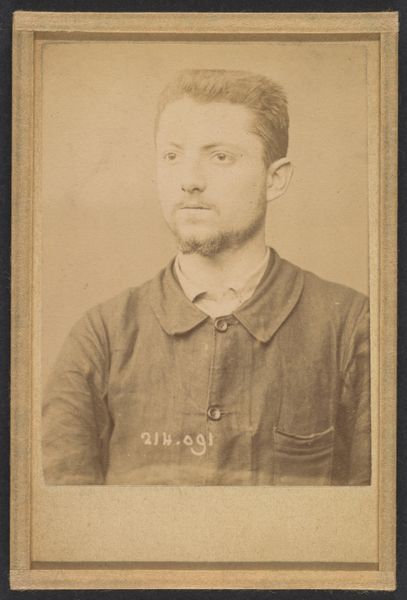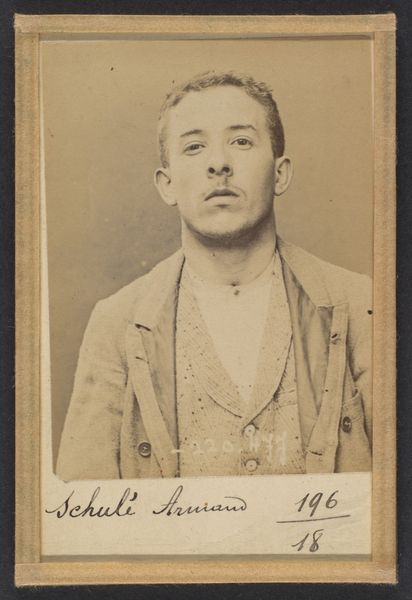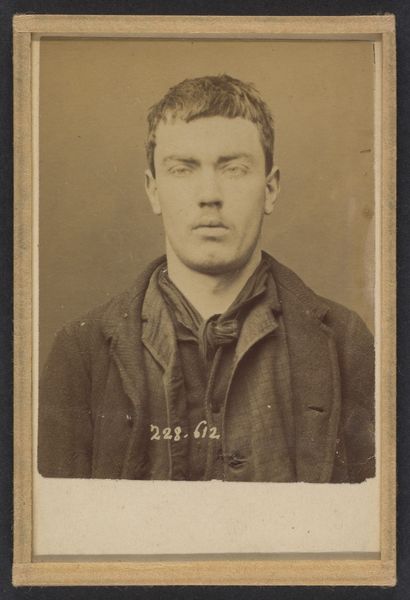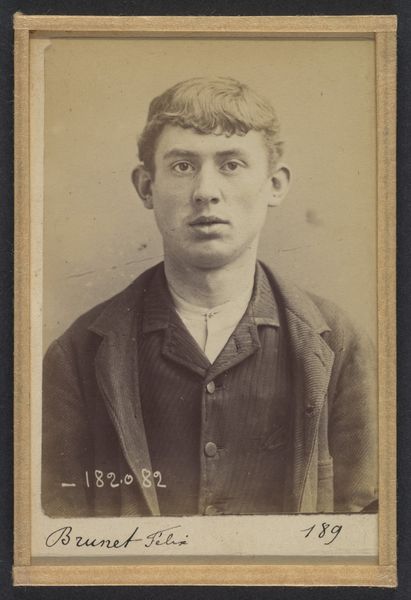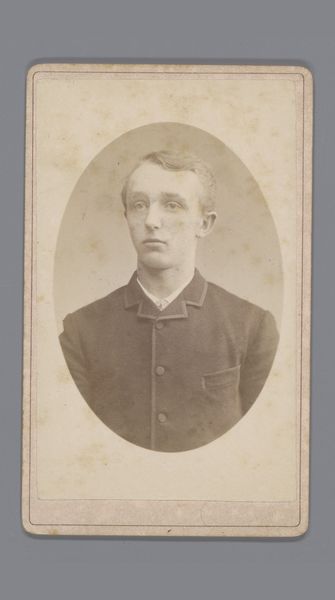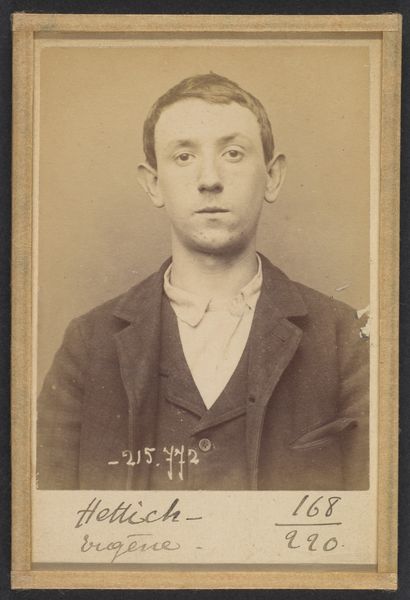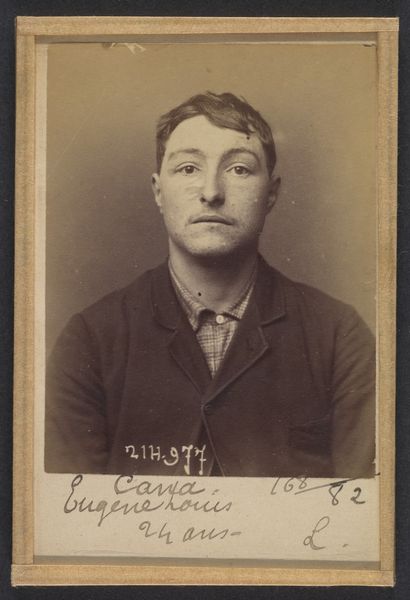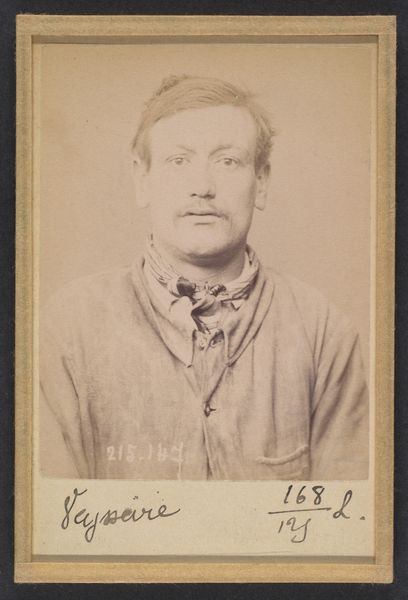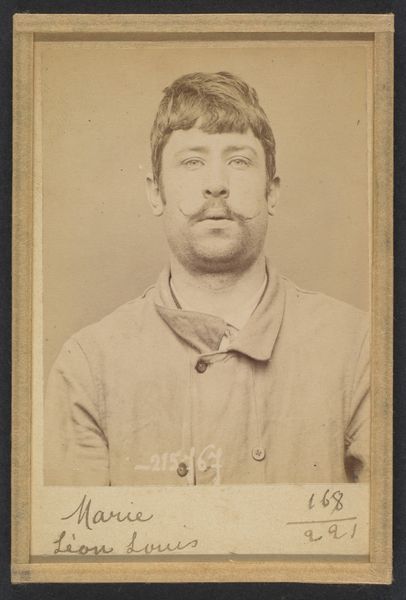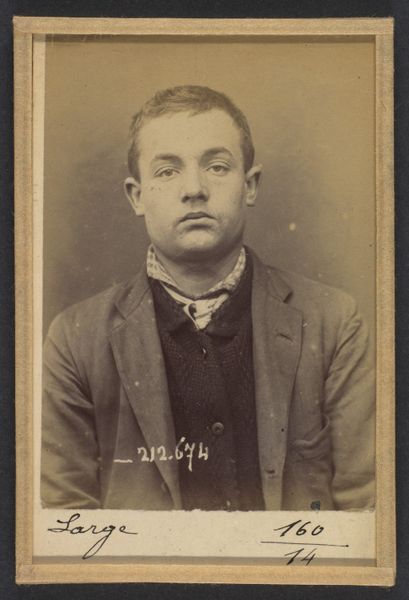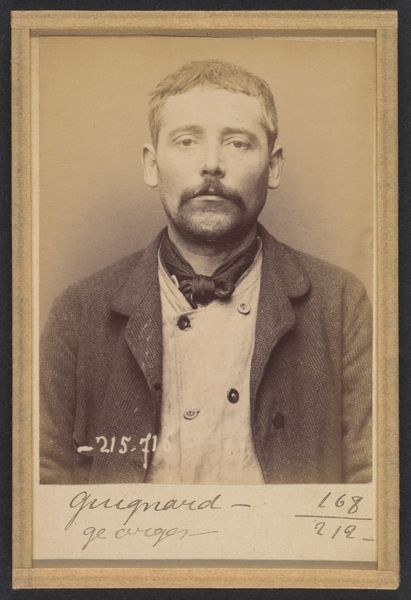
Leger. Joseph. 16 ans, né à Marseille (Bouches-du-Rhône). Jardinier. Fabrication d'engins explosifs. 4/7/94. 1894
0:00
0:00
photography
#
portrait
#
photography
#
19th century
#
men
#
realism
Dimensions: 10.5 x 7 x 0.5 cm (4 1/8 x 2 3/4 x 3/16 in.) each
Copyright: Public Domain
Editor: Here we have a photograph entitled "Leger. Joseph. 16 ans, né à Marseille (Bouches-du-Rhône). Jardinier. Fabrication d'engins explosifs. 4/7/94." by Alphonse Bertillon, taken in 1894. It's a rather stark image, quite different from the portraits we're used to seeing from that era. It has an arresting quality about it; can you offer any initial interpretations? Curator: This photograph transcends a simple portrait. Alphonse Bertillon was a pioneer in forensic science. Consider the historical backdrop: late 19th-century France, rife with social unrest, burgeoning anarchism. Bertillon’s mugshots weren't merely capturing faces; they were tools of control. How does knowing this context change your reading of the image? Editor: It definitely casts it in a different light. The subject isn't just a face; he's a statistic, a data point in a system. The way the image is labelled feels dehumanizing somehow. Curator: Precisely. The stark, almost clinical, presentation contrasts sharply with the traditional portraiture of the time. Note the institutional gaze, classifying and documenting individuals deemed a threat. "Fabrication d'engins explosifs," the charge noted in the image title, reveals the socio-political anxiety underpinning the photograph. Where do you see resistance, or perhaps subversion, in an image like this, if at all? Editor: I suppose any inherent resistance would be located in Joseph Leger’s individual humanity, struggling to break through the rigid system attempting to contain him. Curator: Exactly! Think about the gaze. Is there a challenge, defiance, or even resignation in his eyes? What is he communicating across time and circumstance? Bertillon's attempts to erase individuality through a systematic, ‘scientific’ method inadvertently highlight the resilience of human expression. Editor: It’s sobering to think about the power dynamics at play. Thanks, I'm starting to see this as more than just a historical photograph, but a social and political statement. Curator: Indeed. Art can serve as an ongoing record, as historical evidence. By examining power structures reflected in works of art, we create new understandings that we can carry into the present.
Comments
No comments
Be the first to comment and join the conversation on the ultimate creative platform.

